Located in the heart of Holland Park, the Kyoto Garden is a popular Japanese garden in West London close to both Notting Hill Gate and Kensington High Street. The garden allows visitors to get away from the hustle and bustle of London life with its walking path and several benches where you can enjoy watching the waterfall area and the pond with its vibrant koi fish.
As you follow the circular walking path through the Kyoto garden, you’ll see many features of a traditional Japanese garden such as rock landscapes, stone lanterns and maple trees which are beautiful in autumn. The pathway leads you through the garden in a clockwise flow, with an extra path splitting off into the Fukushima Memorial Garden to one side. Along with the often overlooked gems and seasonal highlights such as the cherry blossoms in spring and hydrangeas in summer, there is much to discover, and if you’re lucky you may even see some peacocks in the garden.
Why was the Kyoto Garden in London built?
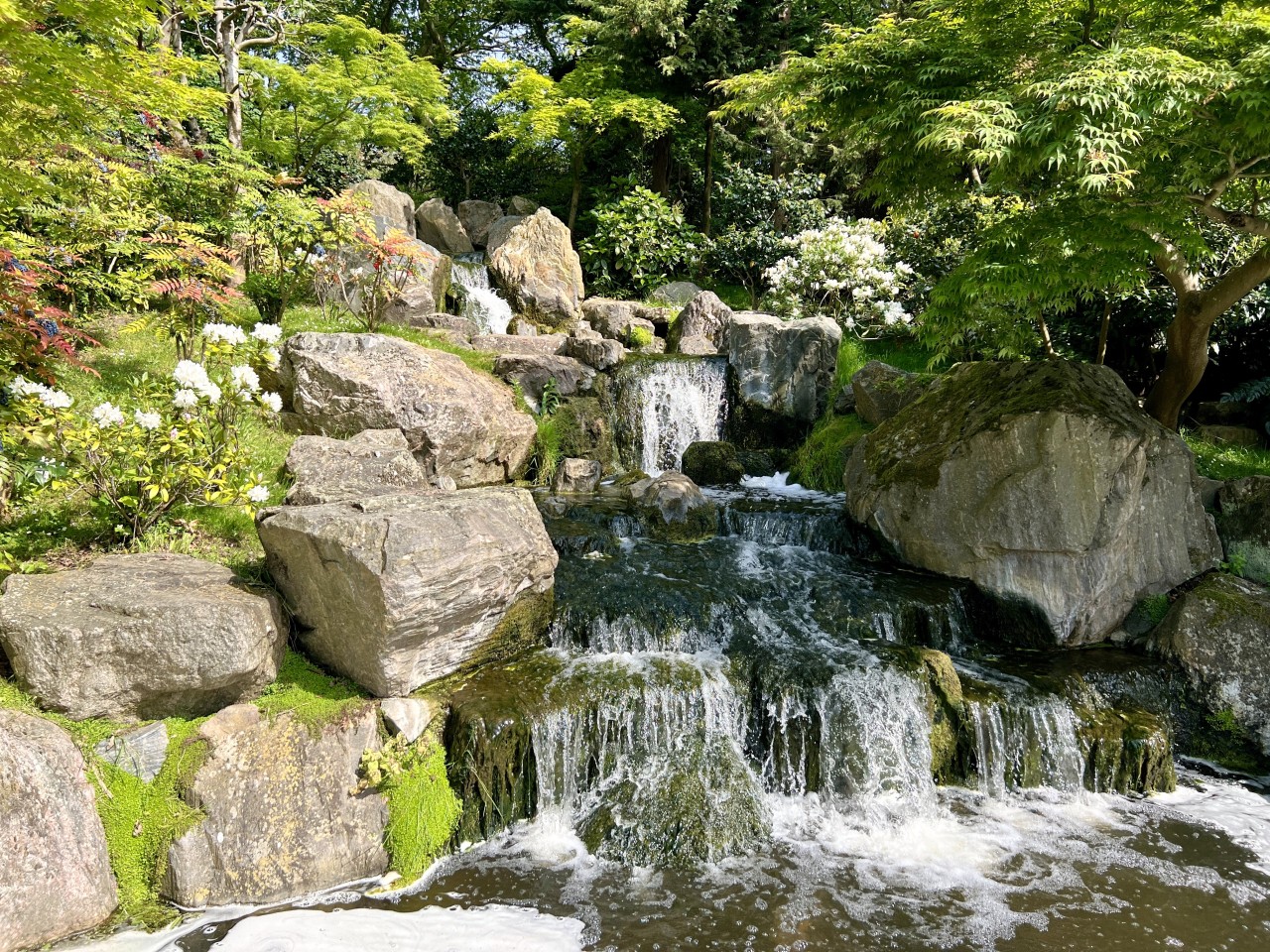
While Holland Park has been open to the public since 1952. the Kyoto Garden is a more recent addition donated by Kyotos’ Chamer of Commerce 40 years later in 1991, in recognition of the upcoming Japan Festival. It was built to introduce a traditional Japanese garden and to show the strong relations between Japan and the UK.
Seasonal Highlights: What to See and When
Kyoto Garden is beautiful to visit in every season. In spring there are cherry blossoms while summer sees the garden in full bloom with vibrant colors from the hydrangeas. Autumn transforms the landscape when the Japanese maple trees showcase their fiery hues by the pond. Finally in winter, the beauty of the garden and its rock garden can be appreciated in its simplicity.
What can you see at the Kyoto Garden Holland Park
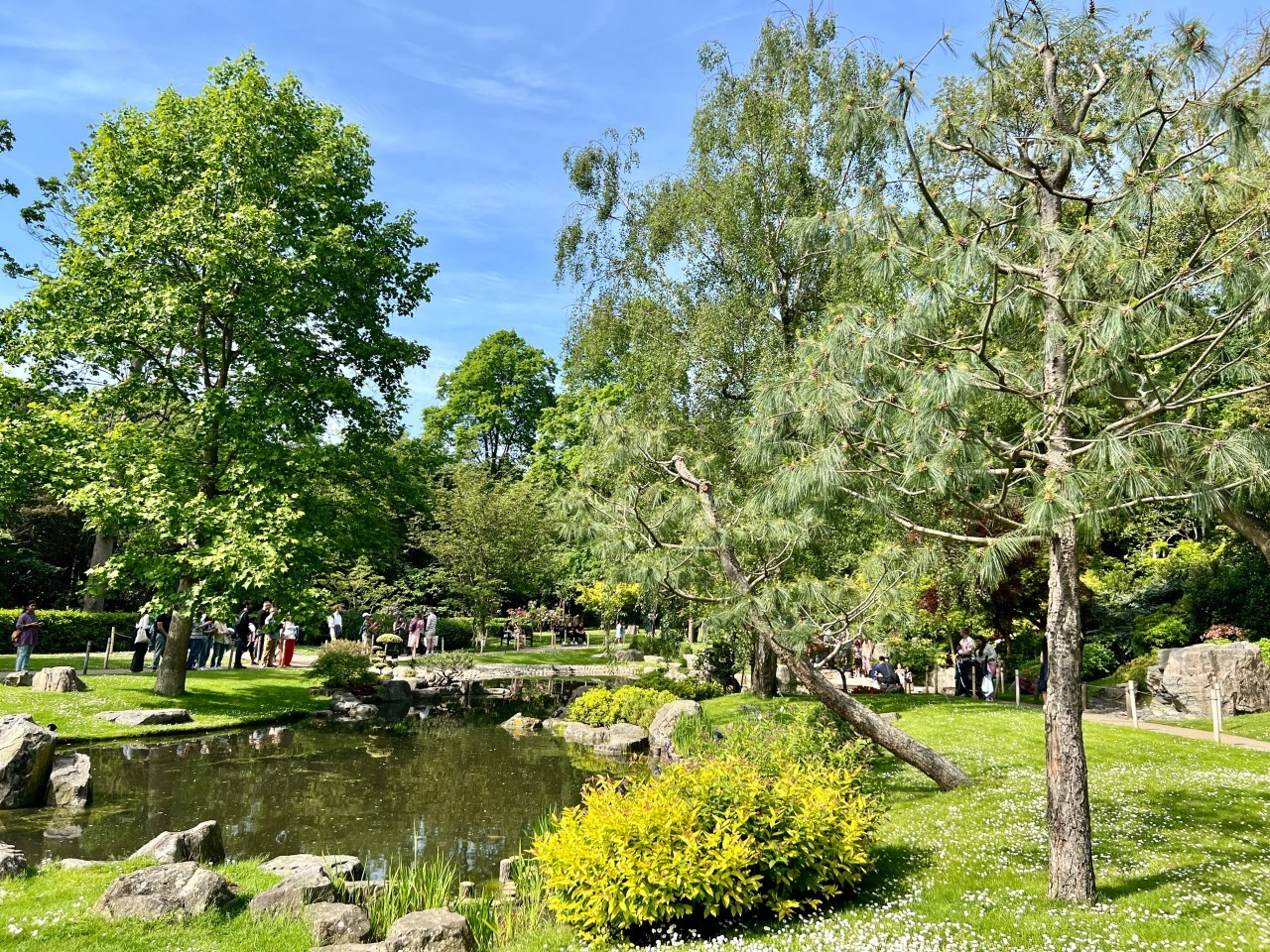
Tiered waterfalls, ponds, and well-kept Japanese maple trees greet visitors at the Kyoto Garden in Holland Park. The garden features traditional stone lanterns, koi ponds teeming with vibrant koi fish, and hidden gems waiting to be discovered. As you stroll through the garden, you may even come across a peacock or two walking through or resting under some shade. The blend of Japanese features and local wildlife is perfect for quiet reflection and appreciation of nature, especially once you move away from the waterfall area.
The Main Attractions: Waterfalls, Koi Ponds, and Stone Lanterns
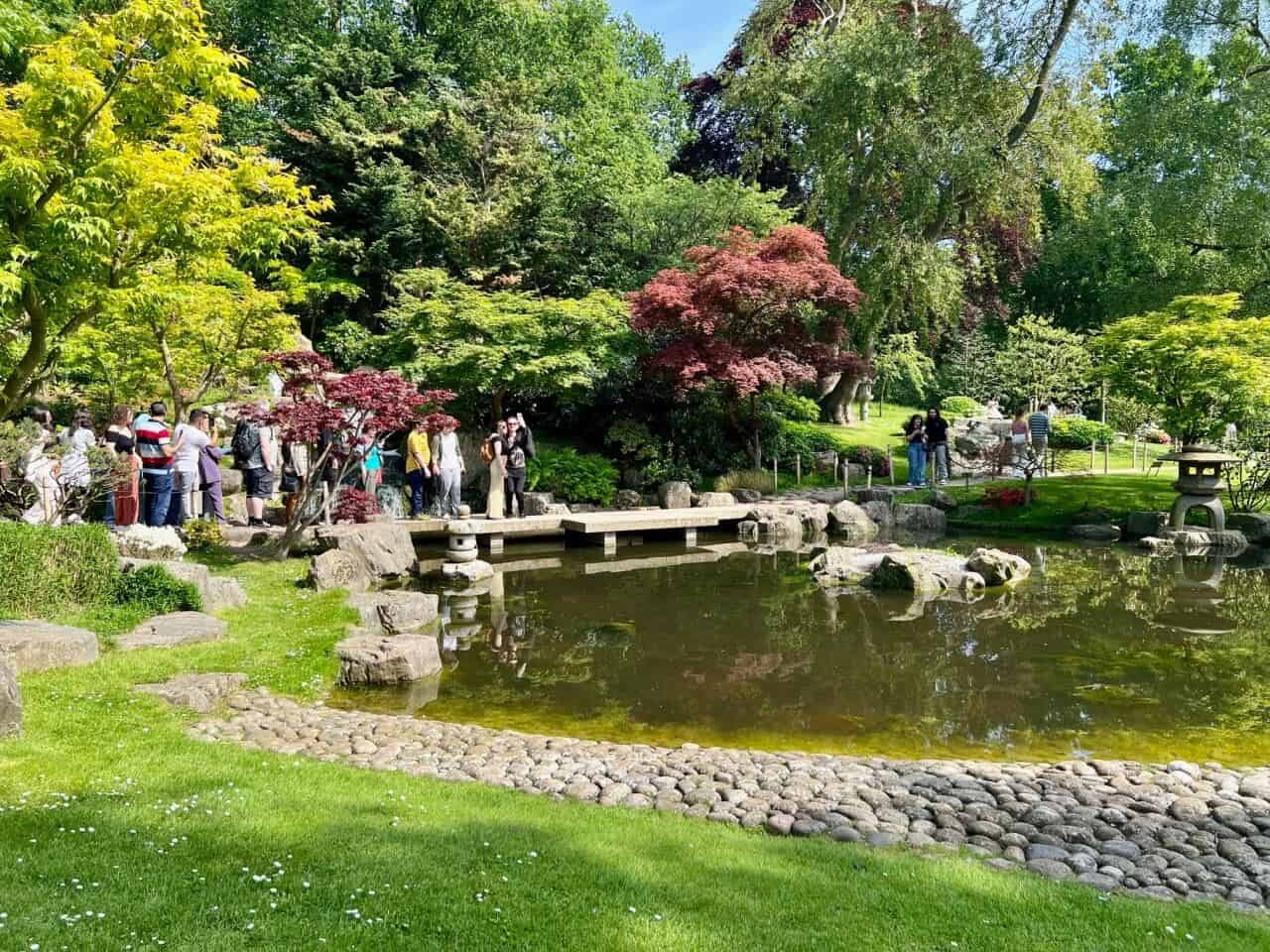
Hidden Gems Within the Garden
The Kyoto Garden harbors captivating hidden gems waiting to be discovered! Meander along the pathways to uncover secluded corners adorned with traditional stone lanterns or find beautiful Japanese trees. Keep an eye out for the koi fish in the serene pond that flows on from the waterfall, or enjoy the vibrant hues of Japanese maple trees. These enchanting surprises elevate your visit, offering moments of quiet reflection away from the bustle of the city.
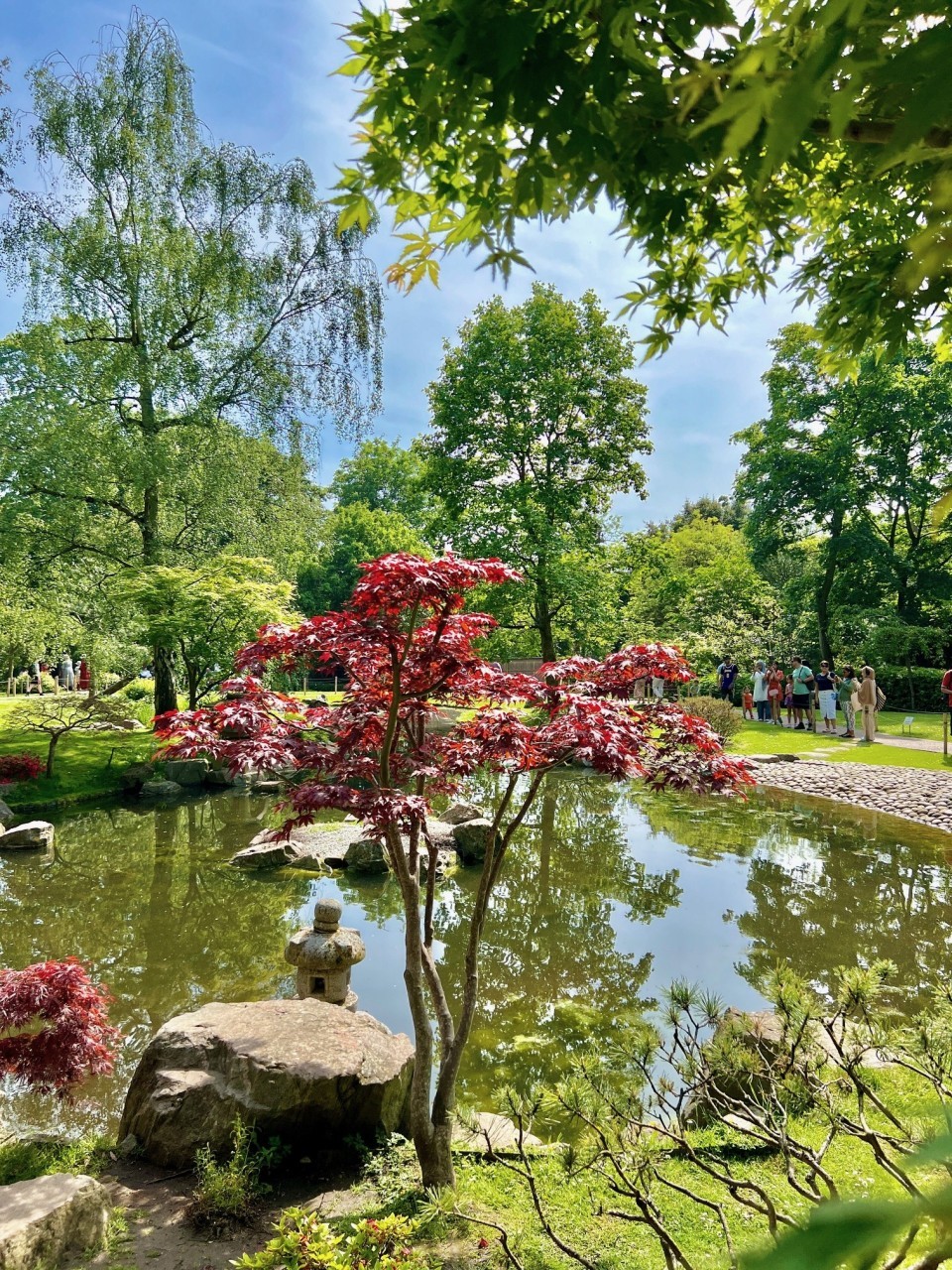
The Flora and Fauna of Kyoto Garden London
The Kyoto Garden in London boasts a diverse array of flora and fauna for visitors to appreciate. Within its serene surroundings, you can identify various plant species like Japanese maple trees, cherry blossoms, and other pretty trees carefully curated to evoke the essence of a Japanese garden. If you’re lucky you’ll spot a muster of peacocks gracefully roaming the grounds and wildlife like colourful koi fish elegantly swimming in the ponds. This harmonious blend of nature creates a tranquil oasis in the heart of the bustling city.
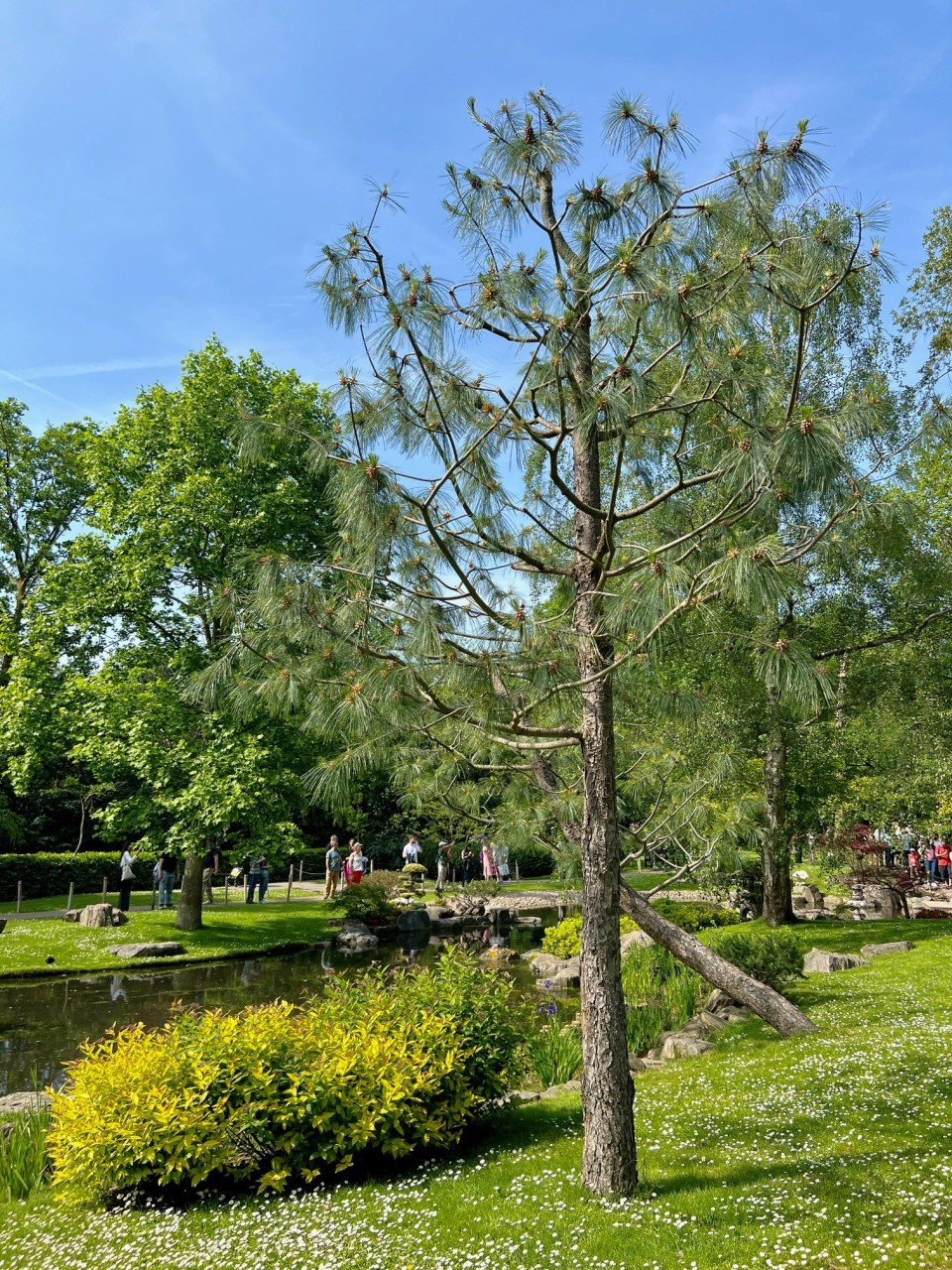
Cultural Significance of Kyoto Garden
The Cultural Significance of Kyoto Garden lies in its portrayal of Japanese-British relations and symbolic garden design. The garden was built before the first Japan Matsuri Festival in 1992, and showcases traditional Japanese features, fostering a sense of peace and reflection. A nod to the gratitude of the Japanese people, the garden embodies a serene blend of East meets West, symbolising unity and harmony in a tranquil setting.
Symbolism in Japanese Garden Design
Symbolism plays a pivotal role in Japanese garden design, with every element holding deeper meanings. Water symbolises life and renewal, while stone lanterns represent enlightenment and guidance. The arrangement of rocks and gravel also mirror natural landscapes like mountains or rivers, fostering a sense of harmony and balance. Meanwhile plants such as cherry blossoms symbolise the transient nature of life, emphasising beauty and impermanence. Each feature is thoughtfully placed to evoke tranquility and contemplation, inviting visitors to connect with nature on a spiritual level within Kyoto Garden.
Planning Your Visit and Opening Hours
When planning your visit to Kyoto Garden, consider visiting during off-peak hours for the most serene experience. The garden’s tranquility is at its peak in the morning, offering a perfect setting for quiet reflection. Opening hours typically align with the rest of Holland Park with closing approximately 30 minutes before dusk, ensuring you can explore this now not so hidden gem conveniently. To fully enjoy the serenity and beauty of the garden, aim to visit during the quieter seasons to avoid crowds and truly appreciate the Japanese features it offers.
Surrounding Holland Park Attractions
Holland Park boasts a range of attractions beyond the Kyoto Garden. Close by is Holland House and the charming Dutch Garden. Nature enthusiasts can revel in the greenery and serene ponds, while there are also areas for sunbathing or sports a few minutes walk away. The Design Museum can be found on the southern edge of the park next to Kensington High Street, and of course if you’re in this area, you have to check out Japan House London.
Frequently Asked Questions
Closest train station to Kyoto Garden London?
The closest train station to Kyoto Garden London is Holland Park Station, just a short walk away to the north. It provides convenient access to the serene oasis in the heart of Holland Park.
Are There Any Entry Fees?
Visitors can enjoy Kyoto Garden in Holland Park for free, as there are no entry fees.
We hope that you found this introduction to the Kyoto Garden to be useful. You may also be interested in our picks of the top Japanese restaurants in London, where to find Japanese supermarkets, or where to get fresh sashimi or sushi in London.


